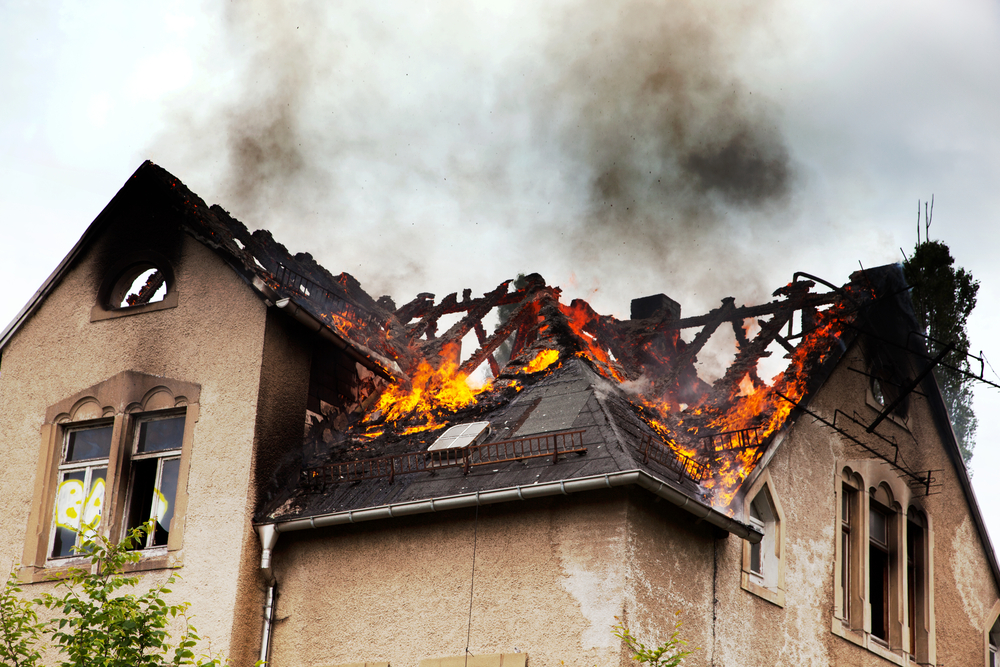When a fire happens, it can destroy a lot of things. This includes property, belongings, and the environment. People often wonder what counts as fire damage. Is it just the burned areas, or does it include smoke and soot damage too?
Knowing what fire damage is helps property owners deal with insurance claims and repairs. Fire damage isn’t just about what the flames touched. It also includes other kinds of harm.
Key Takeaways
- Fire damage includes destruction caused by flames, smoke, and soot.
- It can result from various sources, such as wildfires, electrical faults, or accidents.
- Determining the extent of fire damage is key for insurance claims.
- Fire damage restoration involves cleaning, repairing, and rebuilding affected areas.
- Property owners should document damage well for insurance purposes.
- Professional assessment is often needed to fully understand fire damage.
Understanding Fire Damage Types and Categories
Knowing how to classify fire damage is key to understanding its extent.
Fire damage falls into several types. These include flame damage, smoke damage, and damage from fires. Flame damage is direct destruction from the flames. Smoke damage causes soiling and corrosion from smoke. Fire-related damage includes secondary effects like water damage from fighting fires.
Classification of Fire Damage
Fire damage is sorted into categories based on its severity. These categories are minor, medium, and major fire damage.
- Minor fire damage is limited and can be easily fixed. It often needs just a bit of cleanup and repair.
- Medium fire damage is more serious. It requires a lot of cleanup and restoration work.
- Major fire damage is severe. It needs a full restoration, possibly including rebuilding or major repairs.
Knowing these categories helps property owners and restoration experts plan the best recovery steps.
Assessing fire damage effectively means figuring out the type and category. This helps create a specific restoration plan. It makes sure all damage is covered, leading to a quicker and more effective fix.
What is Considered Fire Damage in Insurance and Assessment
Assessing fire damage is key in the insurance claim process. It affects how much money the policyholder gets back. Property owners count on insurance to help with fire damage costs.
Insurance companies look at many things when they check fire damage claims. How much they cover depends on the policy, what’s not covered, and the deductible. Knowing these details is important for a successful claim.
Factors Influencing Insurance Coverage
- Policy Terms: The specific conditions and coverage limits outlined in the insurance policy.
- Exclusions: Damages or circumstances not covered by the insurance policy.
- Deductibles: The amount the policyholder must pay out of pocket before the insurance coverage kicks in.
When you file a fire damage insurance claim, document the damage well. Take photos, videos, and keep records of talks with the insurance company. This helps show the damage clearly to support your claim.
Fire damage restoration is also important in the claim process. Insurance companies often work with experts to fix the property. Knowing about restoration and costs helps policyholders with their claims.
In summary, understanding fire damage in insurance and assessment is key for property owners. Knowing what affects coverage and how to file a claim helps navigate the complex process of fire damage insurance claims.
Fire Damage Restoration and Cleanup
Fire damage restoration is a detailed process. It starts with removing unsafe parts and cleaning what can be saved. The goal is to make the property safe and like it was before the fire.
The first step is to check how bad the damage is. This means looking at the building’s structure, finding dangers, and figuring out what needs to be fixed or cleaned.
Key Steps in Fire Damage Restoration
- Removing unsafe components, such as charred or damaged building materials
- Cleaning and restoring salvageable materials, like furniture and personal belongings
- Inspecting and restoring or replacing the HVAC system to prevent further damage and health risks
Cleaning up after a fire is very important. It means getting rid of soot, smoke, and other harmful stuff. Special tools and methods are used to clean well and avoid more damage.
Experts also work to prevent future problems. They dry and dehumidify the place to stop mold. They fix any structural issues to keep the building safe.
Importance of Professional Restoration Services
Getting help from fire damage restoration pros is key. They have the right training, tools, and experience. They make sure the property is safe and ready for people to live in again.
Conclusion
Understanding fire damage is key to fixing it well. Fire damage comes in many types and is important for insurance claims.
Reducing fire damage is very important. By improving fire safety, we can lower the risk of fires happening.
Cleaning up after a fire needs a detailed plan. Knowing the steps can help us deal with fire damage better. By focusing on preventing fires, we make our places safer and save money.
Restore & Renew with Water Damage Inc. in Denver, CO
Water damage? Mold? Don’t wait—Water Damage Inc. offers fast response, precise remediation, and compassionate service to bring your Denver home back to pre-loss condition. Contact us now for emergency support and a free estimate!







